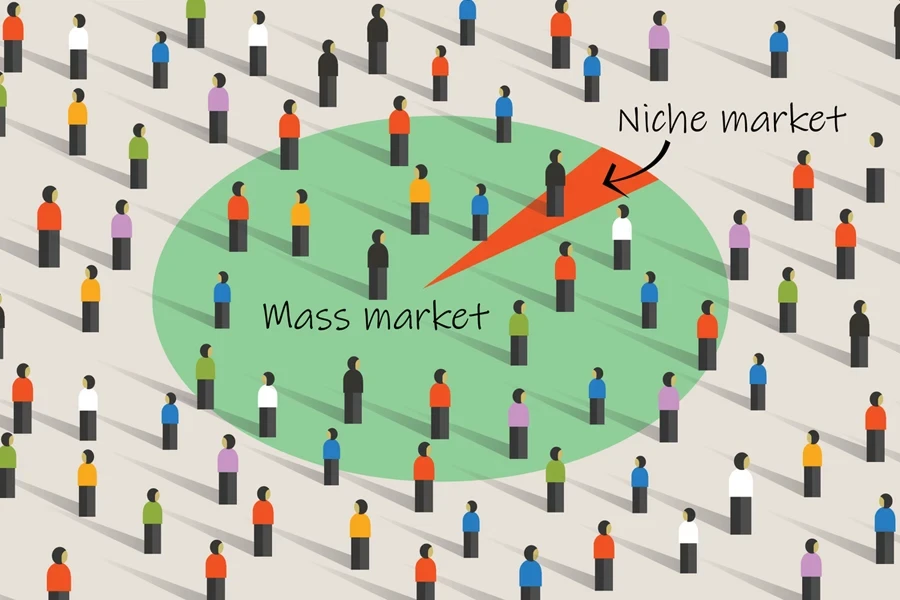In the competitive world of ecommerce, finding products with high profit margins can be the key to sustainable growth and success. This article will explore the most lucrative product categories and strategies to maximize your online store’s profitability. Whether you’re a seasoned entrepreneur or just starting out, understanding high-margin products can help you make informed decisions and boost your bottom line.
Table of Contents
● Understanding profit margins
● Top 5 high-profit margin product categories
● Strategies for maximizing profit margins
● Case study: Candle business profitability
● Tips for selecting high-margin products
Understanding profit margins
Before diving into specific high-margin products, it’s crucial to understand what profit margins are and how they impact your business. Profit margin is a measure of profitability that expresses the amount of money a company retains from its total revenue. It’s typically calculated as a percentage and indicates how much of each dollar in sales your company keeps as earnings.
There are three main types of profit margins to consider:
- Gross profit margin: This measures the profit remaining after accounting for the cost of goods sold (COGS). It’s calculated by subtracting COGS from revenue and dividing by revenue.
- Operating profit margin: This takes into account both COGS and operating expenses, providing a more comprehensive view of a company’s profitability.
- Net profit margin: This is the most inclusive measure, accounting for all expenses, including taxes and interest. It’s calculated by dividing net income by total revenue.

For ecommerce businesses, a good profit margin can vary depending on the industry and specific circumstances. However, as a general guideline:
- A 5% margin is considered low
- A 10% margin is average
- A 20% margin is considered good
Keep in mind that these figures can fluctuate based on factors such as industry standards, competition, and business model. The key is to aim for consistent improvement and to benchmark your performance against industry averages.
Understanding and tracking your profit margins is essential for several reasons:
- It helps you assess your business’s financial health
- It allows you to make informed pricing decisions
- It guides you in identifying areas for cost reduction or efficiency improvements
- It enables you to compare your performance with competitors and industry standards
By focusing on high-margin products and implementing strategies to improve profitability, you can create a more sustainable and successful ecommerce business.

Top 5 High-Profit Margin Product Categories
When it comes to ecommerce success, choosing the right products is crucial. Here are five product categories known for their high-profit margins:
A. Specialty Products
Specialty products cater to specific niches or interests, often commanding higher prices due to their uniqueness. Examples include:
- Artisanal food items
- Handcrafted jewelry
- Limited edition collectibles
These products typically enjoy higher margins because customers are willing to pay a premium for exclusivity and quality. According to industry experts, specialty products can often achieve profit margins of 40% or more.
B. Children’s Products
The children’s market is vast and diverse, offering numerous opportunities for high-margin products. Popular categories include:
- Educational toys
- Organic baby clothing
- Personalized children’s books
Parents are often willing to invest in high-quality products for their children, leading to potential profit margins of 30-50% in this category.
C. Candles and Home Fragrances
The home fragrance market has seen significant growth in recent years. Candles, in particular, offer excellent profit potential:
- Scented candles
- Wax melts
- Essential oil diffusers
According to industry data, candles can produce profit margins ranging from 25% to 50%, making them an attractive option for ecommerce entrepreneurs.
D. Private Label Products
Creating your own branded products can lead to substantial profit margins. Popular private label categories include:
- Skincare and cosmetics
- Supplements and vitamins
- Home organization products
By cutting out the middleman and controlling production costs, private label products can often achieve margins of 40-60% or even higher.
E. Dropshipping Opportunities
While dropshipping margins can be slim, certain product categories offer better potential:
- Niche electronics accessories
- Trendy fashion items
- Unique home decor
By carefully selecting products and suppliers, dropshippers can aim for profit margins of 20-30% on average, with some items potentially yielding higher returns.

Strategies for Maximizing Profit Margins
Now that we’ve explored the top product categories, let’s discuss some strategies for maximizing your profit margins when selling online:
Identify Niche Product Opportunities
While broad categories like clothing and electronics are popular, there’s often intense competition. One effective way to boost profit margins is by focusing on niche markets. Look for niche products within these categories that have less competition but still enjoy high demand. For example, instead of selling general fitness equipment, you could focus on eco-friendly yoga accessories or specialized equipment for rock climbing enthusiasts. These specialized segments often have less competition and more dedicated customers willing to pay premium prices. To identify niche opportunities:
- Conduct thorough market research to find underserved segments
- Analyze trends and emerging markets in your industry
- Consider creating products that solve specific problems for a targeted audience
By catering to a niche market, you can often command higher prices and enjoy better profit margins due to reduced competition and increased customer loyalty.
Leverage Private Label Profitability
Private labeling allows you to create your own branded products, often at a lower cost than purchasing from established brands. This strategy can significantly increase your profit margins. For instance, in the beauty and personal care category, you could develop your own line of natural skincare products or custom-formulated supplements. This strategy offers several advantages:
- Greater control over product quality and features
- Ability to set your own pricing without direct competition
- Opportunity to build brand loyalty and repeat customers
According to industry data, private label products can often achieve margins of 40-60% or even higher. This makes them an attractive option for ecommerce entrepreneurs looking to boost profitability.
Optimize Dropshipping Margins
Dropshipping can be a low-risk way to enter ecommerce, but it often comes with slim margins. There are ways to optimize this business model:
- Carefully select suppliers and products with potential for higher markups
- Focus on unique or hard-to-find items that allow for better pricing
- Offer bundles or kits to increase average order value
- Implement effective marketing strategies to differentiate your offerings
By strategically approaching dropshipping, you can aim for profit margins of 20-30% on average, with some items potentially yielding higher returns.
Enhance Specialty Product Sales
Specialty products often command higher prices due to their perceived value. To maximize profits in this category:
- Emphasize unique features or craftsmanship in your product descriptions
- Use high-quality images and videos to showcase product details
- Offer excellent customer service to justify premium pricing
- Create informative content that highlights the value of your specialty items
By effectively marketing and presenting your specialty products, you can potentially achieve profit margins of 40% or more.

Case Study: Candle Business Profitability
To illustrate the potential profitability of a candle business, let’s examine a real-world example using data from the candle industry.
Market Potential
According to the National Candle Association, the U.S. candle market is estimated to be worth approximately $3.2 billion annually. This substantial market size indicates a strong demand for candles and significant opportunities for new entrants.
Profit Margins
Candles can offer attractive profit margins for businesses. Industry experts suggest that candle makers can aim for profit margins ranging from 25% to 50%. This wide range allows for flexibility in pricing strategies and can accommodate various business models.
Success Factors
Several factors contribute to the success and profitability of a candle business:
- Quality Products: Offering high-quality, unique candles can justify higher price points and lead to better profit margins.
- Effective Marketing: Building a strong brand and utilizing various marketing channels can help attract and retain customers.
- Cost Management: Carefully managing production costs, including materials and labor, is crucial for maintaining profitability.
- Diversification: Expanding product lines to include related items like wax melts or diffusers can increase overall sales and profitability.
Challenges
While the candle business can be profitable, it’s important to note some challenges:
- Competition: The market is saturated with both large manufacturers and small artisanal producers, making it crucial to differentiate your offerings.
- Seasonality: Candle sales often fluctuate seasonally, with higher demand during holidays and winter months.
- Raw Material Costs: Fluctuations in the prices of wax, fragrances, and other materials can impact profit margins.
By understanding these factors and implementing effective strategies, entrepreneurs can build profitable candle businesses. The key lies in balancing quality, pricing, and operational efficiency while meeting customer demands.

Tips for Selecting High-Margin Products
When choosing high-margin products for your ecommerce business, consider the following factors:
A. Criteria for Good High-Margin Ecommerce Products
- Strong demand and niche market appeal
- Price elasticity
- Low production or sourcing costs
- Clear value proposition
- Limited competition
- Strong brand potential
- Scalability
- Potential for repeat purchases and customer loyalty
- Alignment with market trends and long-term viability
- Ease of marketing and promotion
B. Balancing Profitability with Market Demand
While high profit margins are attractive, it’s crucial to balance this with actual market demand. Here are some strategies to achieve this balance:
- Conduct thorough market research to understand customer needs and preferences
- Use tools like Google Trends, social media insights, and competitor analysis to gauge demand
- Start with a small inventory to test the market before scaling up
- Continuously monitor sales data and customer feedback to adjust your product offerings
- Consider offering a mix of high-margin products and more affordable options to cater to different customer segments
By carefully considering these factors and strategies, you can select high-margin products that not only offer good profitability but also meet genuine market demand, setting your ecommerce business up for long-term success.
Conclusion
High-profit margin products are crucial for ecommerce success. By focusing on specialty items, children’s products, private label goods, and strategic dropshipping, businesses can significantly boost profitability. The key lies in balancing market demand with profit potential.
As demonstrated by the candle industry case study, success depends on quality, effective marketing, and cost management. When selecting high-margin products, consider factors like scalability, brand potential, and alignment with market trends.
Ultimately, the path to ecommerce profitability requires continuous analysis, adaptation, and a keen understanding of your target market. What high-margin strategies will you implement to elevate your online business?



